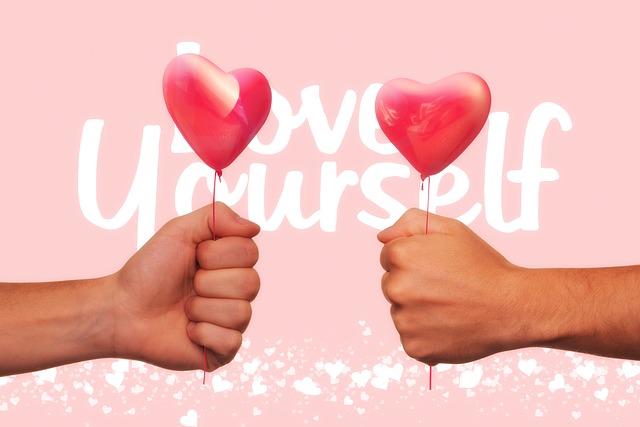When I first opened a social media app, I imagined it would be a simple way to keep up with friends, discover new music, and share the occasional vacation photo. What unfolded, however, was a complex interplay between the digital personas I admired and the quiet, often unspoken, questions that began to surface within me. This personal reflection explores how the relentless tide of social media has shaped my sense of self‑confidence, revealing both the subtle ways it erodes my self‑esteem and the unexpected avenues it opens for growth.
The All‑Seeing Mirror of Likes and Comments
The first time a post I made about my homemade pasta recipe received 17 likes and three comments, I felt a rush of validation. It seemed that the number of likes and the tone of comments could serve as a proxy for how the world perceived me. That moment set the stage for a new, digital barometer of confidence.
- Immediate feedback loops: Likes, shares, and comments arrive within seconds, offering instant affirmation—or, if absent, instant doubt.
- Quantification of worth: A post’s popularity often translates into a measurable score, reinforcing a surface‑level metric for self‑value.
- Social comparison: Scrolling through curated feeds encourages comparisons that are rarely balanced or fair.
The Paradox of Visibility and Vulnerability
On the one hand, social media provides a platform for self‑expression that can feel liberating. On the other, the very visibility it offers amplifies vulnerability. When I share a photo of myself at a new job, the audience instantly knows about my aspirations, my achievements, and even my insecurities. The pressure to present an infallible image can undermine genuine self‑confidence.
“Every image I post is a promise I make to myself and to an audience I can’t see. The weight of that promise sometimes feels heavier than the photo itself.”
Comparative Cognition: When the Ideal Becomes a Benchmark
We are social beings by design, and that instinct drives us to gauge ourselves against our peers. Social media, by amplifying the most polished aspects of others’ lives, creates a distorted yardstick. In my own reflection, I’ve noticed how certain patterns emerged:
- Early mornings in wellness studios; mid‑night selfies on travel trips; spontaneous road trips that look like a reel of a perfect life.
- My own moments of quiet study or late‑night work rarely matched that glamor, and the discrepancy made me question my worth.
- Each comparison subtly shifted my self‑confidence downward, turning accomplishments into “just another post.”
This cycle of comparison not only erodes confidence but also leads to a feedback loop where the desire to post often supersedes the intrinsic joy of sharing.
Mindful Consumption: Choosing Curated Feed Wisely
To regain control, I began practicing mindful consumption. This involves:
- Curating the accounts I follow to include only those who inspire personal growth rather than merely entertainment.
- Scheduling set times for scrolling, reducing the impulse to check notifications constantly.
- Engaging in digital detoxes, where I abstain from any social media for 48 hours each week to reconnect with non‑digital self‑confidence.
Through these practices, I discovered that limiting exposure to curated highlight reels can reduce comparison and boost self‑esteem.
Authenticity vs. Curation: Striking a Balance
One of the most profound realizations in this personal reflection is the tension between authenticity and curation. While social media rewards curated, polished content, my authentic self often feels at odds with that ideal. However, authenticity has a subtle power to reinforce confidence because it aligns external presentation with internal values.
“When I share a candid mistake—like a typo in a post—my followers respond with empathy. That response feels more validating than any perfectly edited image could have.”
Encouraging others to share authentic moments also creates a ripple effect. When my followers post candid snapshots, the overall environment shifts toward genuine interaction.
Rebuilding Confidence through Community Support
It turns out that the very platforms that can harm self‑confidence also offer a source of communal reinforcement. By engaging in supportive communities, I have found:
- Positive feedback loops: Encouraging words from others reinforce my belief in my abilities.
- Shared narratives: Reading stories of others’ struggles reminds me that confidence is a shared journey, not an isolated victory.
- Mentorship opportunities: I occasionally reach out to more experienced users who provide constructive guidance.
These connections have allowed me to shift from a self‑critical mindset to a collaborative one, which in turn nurtures a healthier self‑confidence.
From Reflection to Action: Implementing Digital Boundaries
The next phase of this personal reflection involved setting actionable boundaries. I began by:
- Designating “no‑social‑media” zones in my home, such as the bedroom and the kitchen.
- Using app‑based timers to limit daily usage to a specific duration.
- Prioritizing face‑to‑face interactions over digital ones for certain relationships.
These boundaries helped me reclaim time for personal hobbies—painting, reading, and exercise—that directly contributed to a sense of accomplishment unrelated to online validation.
Measuring Confidence Beyond Digital Metrics
Ultimately, confidence is rooted in self‑awareness, skill, and personal values. To ensure my self‑confidence is not tethered to social media metrics, I introduced non‑digital measurement tools:
- Weekly reflection journals where I note achievements, challenges, and personal growth.
- Monthly skill checklists that track progress in areas like public speaking or coding.
- Bi‑annual conversations with close friends to discuss how I’ve changed, independent of my online presence.
These tools helped me see confidence as a cumulative result of experiences, not a fleeting online score.
The Road Ahead: A Continuous Journey
In this ongoing personal reflection, I acknowledge that the relationship between social media and self‑confidence is dynamic. New platforms emerge, algorithms evolve, and cultural norms shift. What remains constant, however, is the need for intentionality. By choosing to engage mindfully, set boundaries, and focus on authentic growth, I can navigate the digital landscape without compromising my core sense of self.



